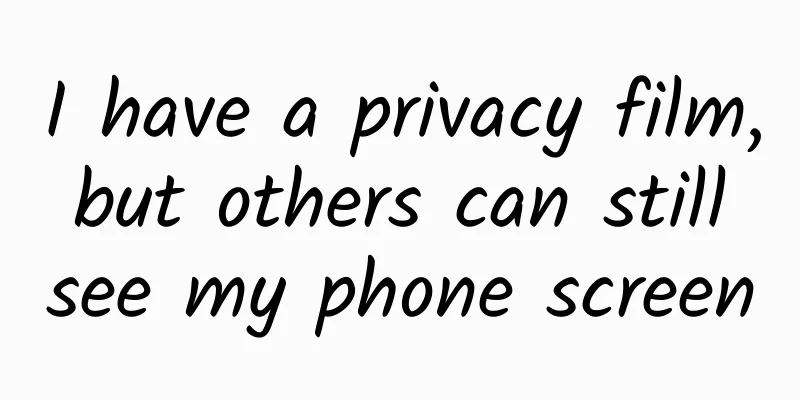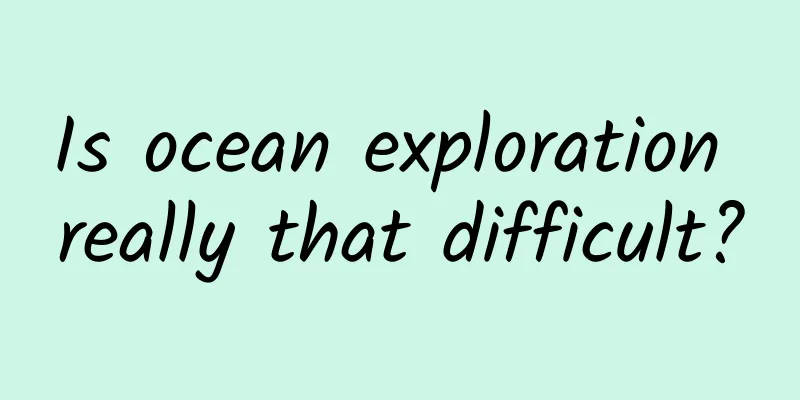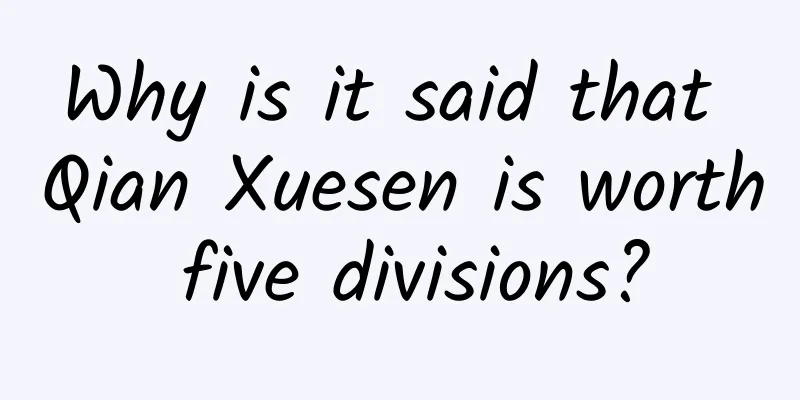I have a privacy film, but others can still see my phone screen

|
A while ago, a piece of news about "spy film" became a hot search. The gist was: when a popular star was photographed in public, the conversation on his phone could be seen clearly. What’s even funnier is that someone in the comments suggested buying a privacy screen, but another comment said that this is already a privacy screen (that is, it has a privacy film attached)—— Wait, what exactly is a privacy filter? Can it really prevent others from seeing our phone screens? Privacy film: Put a micro "blind" on the screen In fact, with the widespread use of smartphones today, all your personal information, whether it is work and family details, chat records and love life, or even information such as ID cards and bank cards, may be displayed on a small screen. Once the phone screen is targeted by someone nearby with ulterior motives, it may cause big trouble. Therefore, in order to make the mobile phone screen safer, a simple way is to spend a few dozen yuan to stick an anti-peep film on it, so that strangers on both sides of the phone will not easily see the displayed content. Why does the mobile phone privacy film have such an effect? The secret lies in its structure. This layer of membrane looks transparent on the outside, but it is actually equivalent to a miniature "blind" . In the fine grating structure of tens or hundreds of microns, which is thinner than a hair, there is a row of "small fences" that block light . As can be seen from the above picture, if the human eye is looking at the phone in a very small angle (such as 30 degrees) directly in front of the phone, the light emitted from the phone screen can be received normally, but for viewers on the side of the phone screen, the phone screen seems to be "black" because of the obstruction of the "small fence" array . Relying on this simple and direct method, the anti-peep screen can protect the personal privacy of mobile phone users to a great extent. Of course, the size of the "viewing angle" is not a fixed value. It is related to the width, height and spacing of these "small fences" and can be designed artificially. It is not easy to design the size of the " viewable angle ". Since mobile phone users often look at the screen at an angle, such as when taking photos, they will raise or lower the phone. At this time, the viewing angle of the user and the bystander is actually similar. Therefore, if this angle is set to a small value , the chance of others peeking at the screen content is small, but it may often prevent you from watching normally; if this angle is set to a large value , you don't have to always "sit upright" to look at the phone, but it is also easier for others to peek. What can we do? Mobile phone privacy film designers can only strike a balance between the two, making the "viewing angle" a compromise , but sometimes it still cannot meet the needs, resulting in "not being able to see what should be seen" or "seeing what should not be seen". In addition, everything has two sides. While the "blinds" structure on the privacy film prevents peeping, it will inevitably block some light when you look at the screen directly, causing negative consequences such as reduced screen brightness or increased power consumption. A reverse brain hole: Turn your phone into a "naked eye 3D" effect The purpose of putting up a privacy film is to prevent your screen from being peeped at. However, sometimes we do the opposite, not only do we not stop the "enthusiastic viewers" who look at the screen sideways, but we also send them the image content so that they "have to watch it even if they don't want to." How do you do that? Just put another film on your phone or computer screen. There are still many small fences inside the film, but the design is slightly different, as shown below. Image: Wikipedia The result is that when you look at the screen from two different angles, you will see red and green parts in different positions on the screen. If the angle is set smaller, the red and green areas correspond exactly to the left and right eyes of a person . One of the important reasons why we have a three-dimensional sense when we look at things is that the left and right eyes see different images of the same object due to slightly different positions. When we mix the left eye image and the right eye image as red area and green area respectively and display them on the screen, and then project the two sets of images to the left and right eyes respectively through this layer of film, the viewer's brain combines the left and right eye images, and the naked eye 3D display effect can be achieved. With such a layer of film attached to the mobile phone screen and a special binocular format image and video file, a 2D mobile phone can be used as a 3D mobile phone . If the angle is set larger, two viewers at different angles can see different parts of the content on the screen through this layer of film, which allows "one screen for two uses" and two people to "do their own things". For example, on one screen, one person is watching a movie while the other is typing and chatting. Continue to imagine: If the privacy film What about wearing it on people's eyes? Let us open our minds and think about another possibility—— Putting a layer of film on the mobile phone screen, whether it is for anti-peeping or three-dimensional display, is actually equivalent to putting a "pair of glasses" on the mobile phone screen. Glasses can originally be worn on human eyes, so, what will happen if this "anti-peep film glasses" are worn on human eyes ? Here I would like to talk about the polarization of light. Light is an electromagnetic wave. When it is of the same brightness and propagates in the same direction, it will vibrate in different directions, that is, the polarization directions are different. Light with different polarization directions looks the same on the surface, and only when it passes through a polarizing film that is specially used to detect polarized light will it "reveal its true form." Polarized glasses can be used for both three-dimensional display and anti-peeping. The 3D movies that we usually watch in theaters require wearing glasses, such as "Avatar", "Avengers" and "Spider-Man", all use this method. The picture displayed on the screen contains light with two different polarization directions, such as left-handed circularly polarized light and right-handed circularly polarized light. The left eye picture and the right eye picture are displayed with two kinds of light respectively, and the left and right eye polarized lenses on the glasses will filter the polarized light in the corresponding directions respectively, thus realizing the three-dimensional display of binocular parallax. When preventing peeping, a composite image will be displayed on the phone screen, which includes both the hidden image displayed by polarized light in one direction and the noise interference displayed by polarized light in another direction. If you don't wear special glasses to watch, the mixture of the two will be a "white" patch. When the user wears polarized glasses corresponding to the first direction of polarized light, the hidden image can be "filtered" out, and the phone screen can be viewed normally. People around who don't have glasses can only "stare anxiously, helpless". Of course, the disadvantage of this anti-peeping method is that you have to wear special glasses every time you use a mobile phone, which is really not very convenient. A hidden image display device using polarized light. Photo taken by the author at Shenzhen Huaqiangbei Museum In fact, a similar principle can also explain the stunt of seeing through mahjong tiles and playing cards in many "God of Gamblers" movies - the polarizing film can extract the originally hidden pattern by allowing only polarized light in a specific direction to pass through, thus cheating in the gambling game. Okay, enough imagination, back to reality. "Preventing screen peeping" is indeed an increasingly important issue in our daily lives. Fortunately, technology is changing with each passing day. I believe that there will be many other clever technical means to solve the problem of privacy protection of mobile phone screens or other screen contents. However, the most important thing is that users should pay attention to their surroundings when using mobile phones in public places . Author: Jiao Shuming Editor: Maiya Yang Guokr (ID: Guokr42) If you need to reprint, please contact [email protected] Welcome to forward to your circle of friends Source : Guokr |
<<: How are transmission lines mounted on tall towers?
>>: In fact, penguins have cold feet too!!!
Recommend
Can Xiaomi Air Conditioner, which was transferred from Midea to Changhong by Lei Jun, successfully snatch market share from Dong Mingzhu?
Regarding the cooperation between Xiaomi and Chang...
How much does it cost to be an agent of Chuxiong Transportation Mini Program?
How much does it cost to be a Chuxiong agent for ...
@You who love spicy food, does eating spicy food prevent cancer or cause cancer? The research results will definitely surprise you
As a common condiment, chili pepper plays an impo...
An undergraduate student took a part-time job during the holiday and overturned this famous mathematical conjecture
An undergraduate and a first-year graduate studen...
Marketing and promotion skills | The marketing behind the crazy rush for Uniqlo’s co-branded T-shirts!
Recently, the Kaws x Uniqlo co-branded T-shirts w...
Xiaohongshu Hot Note Titles (Tutorial Included)
There are too few eyes in the notes and the numbe...
Glasses also have a “shelf life”, so be sure not to let them expire!
Do glasses have a shelf life? On the surface, gla...
Android performance optimization: How to avoid creating unnecessary objects in Android
[[169562]] In programming development, memory usa...
Your back pain may be related to crossing your legs
Part 1 Your back pain may be related to crossing ...
AMG GT family to be officially unveiled in 2017
At the Los Angeles Auto Show, Mercedes-AMG offici...
Android Wear 2.0 preview: new single sign-on feature
In the recently released Android Wear 2.0 develop...
What advances have been made in the Zen architecture that will allow AMD and Intel to compete with each other?
It has been many years since AMD and Intel last fa...
From music reviews to branded videos, what are NetEase Cloud Music’s marketing secrets?
There is a jargon in the advertising circle: NetE...
Lei Jun talks about his entrepreneurial philosophy and finds a path to high probability of success
Lei Jun personally tells his entrepreneurial phil...
Free Qianjiang Road Investment Course
The course lecturers are researchers and fund mana...









